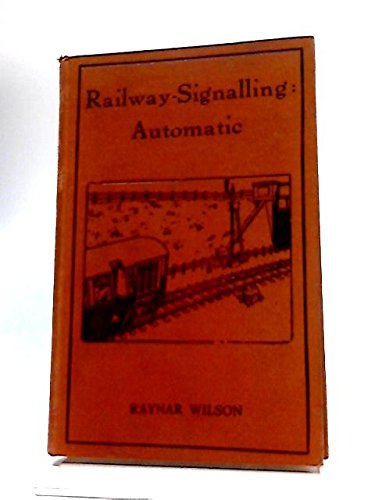
If you have a scroll saw and a passion for woodworking, why not try your hand at making a wooden puzzle? Wooden puzzles are not only a fun and challenging pastime, but they also make great gifts or keepsakes. In this article, we will walk you through the step-by-step process of creating your very own wooden puzzle with a scroll saw.
Step 1: Choose a Design
Before you start cutting, you’ll need to choose a design for your puzzle. Consider the difficulty level you want to achieve and the intended user of the puzzle. Keep in mind that simpler designs are usually easier to cut and assemble.
Pro tip: If you’re new to making wooden puzzles, it’s a good idea to start with a basic design like a simple shape or a few interlocking pieces.
Step 2: Select the Right Wood
Picking the right type of wood is essential for a successful puzzle. Choose a hardwood that is strong, stable, and easy to work with. Some popular choices include maple, birch, and walnut. Avoid using softwoods as they tend to break more easily.
Pro tip: Look for wood that is free of knots or other defects, as these can affect the structural integrity of your puzzle.
Step 3: Transfer the Design
Once you have your design and wood ready, it’s time to transfer the design onto the wood. You can either draw the design directly onto the wood or use a transfer method like carbon paper or a printable template.
Pro tip: Make sure to mark each piece with a number or letter to keep track of the puzzle’s assembly later on.
Now that you have the basics covered, it’s time to fire up your scroll saw and start cutting your wooden puzzle pieces. Stay tuned for the remaining steps in our next article!
Step-by-Step Guide: Crafting a Wooden Puzzle with a Scroll Saw
If you enjoy working with wood and have a scroll saw, making a wooden puzzle can be a fun and rewarding craft project. With a few simple steps, you can create a unique puzzle that will challenge and entertain both children and adults.
- Choose the type of wood: Start by selecting a suitable type of wood for your puzzle. Hardwoods like maple, birch, or oak are good choices as they are sturdy and can withstand the cutting process.
- Design the puzzle: Decide on the design of your puzzle. You can go for classic shapes such as animals, shapes, or letters. Draw the design on a piece of paper or print out the template to use as a guide for cutting.
- Prepare the wood: Place the wood on a flat and stable surface. Secure it with clamps to prevent any movement while cutting. Make sure the wood is large enough to accommodate your design.
- Set up the scroll saw: Install a fine-toothed blade on your scroll saw, suitable for intricate cuts. Adjust the blade tension and speed according to the thickness of the wood. Follow the manufacturer’s instructions for proper setup.
- Cut the puzzle pieces: Start cutting along the outline of your design using the scroll saw. Take your time and follow the lines carefully to ensure precise cuts. If needed, use a smaller drill bit to create holes for internal cuts.
- Sand the puzzle pieces: After cutting, use sandpaper or a sanding block to smooth any rough edges or splinters. Pay attention to the interlocking parts to ensure a snug fit when assembling the puzzle.
- Apply a finish: Apply a coat of non-toxic finish to protect the wood and enhance its appearance. Choose a finish that is safe for children if the puzzle is intended for them. Let the finish dry completely before proceeding.
- Assemble the puzzle: Once the finish is dry, it’s time to assemble the puzzle. Arrange the pieces in the correct order and interlock them to form the complete design. Test the puzzle by solving it yourself to ensure a proper fit.
- Enjoy and share: Your wooden puzzle is now complete! Take pride in your craftsmanship and enjoy the satisfaction of creating something unique. Share your creation with family and friends, or consider selling your puzzles at craft fairs or online marketplaces.
Remember, crafting a wooden puzzle with a scroll saw requires patience and attention to detail. As you gain experience, feel free to experiment with different designs and techniques to create even more intricate and challenging puzzles.
Selecting the Right Wood for Your Project
When it comes to making a wooden puzzle with a scroll saw, selecting the right wood for your project is crucial. The type of wood you choose can greatly impact the final result of your puzzle, including its aesthetics, durability, and ease of cutting. Here are some factors to consider when selecting the wood for your project.
1. Hardwood vs. Softwood
One of the first decisions you’ll need to make is whether to use hardwood or softwood for your puzzle. Hardwoods, such as oak, maple, or mahogany, are generally more durable and can withstand wear and tear better than softwoods, such as pine or cedar. However, softwoods are often easier to cut and may be more suitable for intricate designs.
2. Grain Pattern
The grain pattern of the wood can also play a significant role in the overall appearance of your puzzle. Some woods, like oak, have a prominent grain pattern that adds visual interest to the finished product. Others, like maple, have a more subtle grain that allows for smoother and more detailed cuts. Consider the look you want to achieve and choose a wood with a grain pattern that complements your design.
While there are no hard and fast rules when it comes to selecting the right wood for your puzzle, taking these factors into account will help you make an informed decision. Remember, experimenting with different types of wood can be part of the fun, so don’t be afraid to try new materials and see how they affect your puzzle-making process!
Designing and Tracing the Puzzle Pattern
Before you start cutting the wooden puzzle pieces, you need to design and trace the puzzle pattern. Here is a step-by-step guide on how to do it:
- Decide on the theme or shape of your puzzle. It could be animals, letters, numbers, or any other design you like.
- Sketch the puzzle pattern on a piece of paper. Start with a rough outline of the overall shape, and then add the individual pieces within that shape.
- Ensure that the individual puzzle pieces are interlocking correctly and will provide a challenge for the person solving the puzzle.
- Measure the dimensions of the puzzle pattern and transfer them to a suitable piece of wood. You can use a ruler and a pencil to mark the dimensions accurately.
- Secure the wood in place using clamps or a vice to ensure it doesn’t move while you are tracing the pattern.
- Place the pattern on top of the wood and use a pencil to trace the outline of the puzzle onto the wood surface. Apply moderate pressure to create a visible line.
- Remove the pattern from the wood and check if the traced lines are clear and accurate. Make any necessary adjustments or corrections.
- If you are satisfied with the traced pattern, you can now proceed to cut out the puzzle pieces using a scroll saw.
Once you have completed these steps, you will have a well-designed and accurately traced puzzle pattern ready to be cut into individual pieces. Take your time in designing and tracing the pattern to ensure a successful and enjoyable puzzle-making process.
Cutting and Assembling the Puzzle Pieces
Once you have chosen the design for your wooden puzzle, it’s time to start cutting and assembling the puzzle pieces. Follow these steps to create your puzzle:
1. Prepare the Wood
Begin by selecting a suitable type of wood for your puzzle. It should be strong enough to withstand cutting and small enough to work with on your scroll saw.
Measure and mark the dimensions of your puzzle on the wood, ensuring that the lines are straight and accurate.
2. Set up the Scroll Saw
Place the chosen blade into your scroll saw and tighten it securely. Adjust the speed and tension according to the thickness and hardness of your wood.
3. Start Cutting
Begin cutting along the marked lines, taking care to follow the design precisely. Take your time and make slow, steady cuts to ensure accuracy.
As you cut, remove the waste material and set it aside. This will help keep your workspace clean and prevent the pieces from being damaged.
4. Sand the Pieces
Once all the pieces have been cut, use sandpaper to smooth any rough edges or surfaces. This will give your puzzle a polished and professional look.
5. Test the Fit
Before assembling the pieces, it’s important to ensure that they fit together correctly. Test the fit of each piece in the overall design to make any necessary adjustments.
6. Assemble the Puzzle
Finally, carefully assemble the puzzle pieces according to the design. Start by connecting the edge pieces and work your way towards the center.
Once all the pieces are in place, press them together firmly to ensure a tight fit. Your wooden puzzle is now ready to be enjoyed!
Remember to follow all safety precautions while using the scroll saw and handling sharp tools. Take breaks when needed and have fun creating your own unique wooden puzzle!






